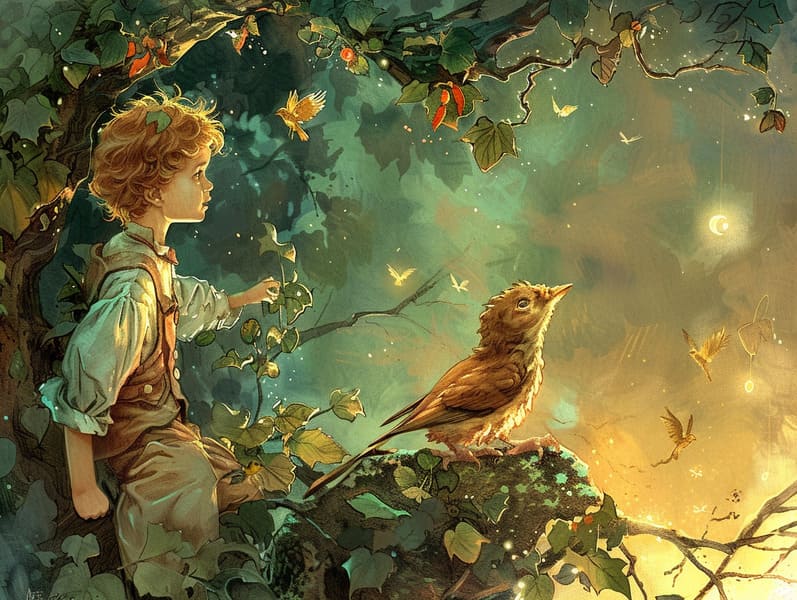The Creation of Fairy Tales for Kids and Its Steadfast Attraction.
The Creation of Fairy Tales for Kids and Its Steadfast Attraction.
Blog Article

Children's fairy tales have legendary status. These stories have been relayed from one generation to the next ages before they were ever written down. They originated from a variety of societies, including Eastern traditions. They were initially transmitted among elders, often carrying themes and messages concerning the societal norms and beliefs of the time.
The Grimm brothers, Jacob and Wilhelm Grimm, were among the first to collect many of these beloved stories. Their compilation, "Grimm's Fairy Stories," included stories like "Cinder Maid," "The Bread Crumb Trail," and "Snow White," which have since become cornerstones in the world of classic fairy tales. Similarly, Hans Christian Andersen's fantastical tales, such as "The Mermaid's Tale," and "The Duckling that Could," have captured hearts worldwide, solidifying their place in the pantheon of iconic fairy tales.
Despite being ancient, these tales remain as relevant as ever, especially as children's night stories. These enchanting tales are now available in diverse formats, including richly illustrated books, enchanting animations, and web-based fairy tales.
Their lasting appeal can be attributed to several fascinating points:
Significant Morals: Timeless fairy tales often illustrate important moral lessons. Fairy tales like "The Tale of the Boy Who Cried Wolf" teach the importance of sincerity, while "The Tortoise and the Hare" illustrate the virtues of resolve and meekness. These stories offer children clear distinctions between truth and falsehood, guiding their moral compass in a kind yet lasting way.
Warmth and Understanding: Old fairy tales frequently feature protagonists facing challenges and struggles, fostering children to connect with their struggles and celebrate their triumphs. For instance, "Beauty and the Beast" demonstrates the significance of looking past the exterior to realize the inner being of a person, building understanding and knowledge.
Cultural Awareness: Many fairy tales are infused with the cultural contexts from which they emerged. Immersing in these fairy tales can provide captivating looks into different backgrounds, enhancing a sense of cultural respect and comprehension.
Inventiveness and Imagination: The whimsical elements in classic fairy tales—magical kingdoms—revitalize children’s creative thoughts. These narratives bring readers to fantastical realms, generating creative dreams and a sense of curiosity that lasts a lifetime.
Ancient fairy tales are not only spellbinding but also educational. They act as entrancing tools in nurturing various mental and emotional abilities in young ones. When ancient fairy tales are spoken out loud, they nurture verbal skills by introducing new linguistic elements and intricate sentence structures. This practice also promotes listening abilities and attention span, as little ones remain attentive, anticipating to see what happens next.
Furthermore, examining the themes and characters of timeless fairy tales can improve intellectual skills and critical thinking. Children learn to see patterns, foresee events, and get cause and effect. These conversations also ease young ones communicate their thoughts and feelings, cultivating their emotional intelligence.
In today’s digital age, the proliferation of internet fairy tales has made these tales more attainable than ever. Internet sites and online apps share extensive collections of Grimm's fairy tales that can be read or listened via anytime, anywhere. Fairy tales spoken are particularly in demand, supplying an delightful method for the young to relish these mesmerizing stories. Narrated books and spoken videos transport characters and settings to life, often supported by charming melodies and songs that intensify the narrative adventure.
The lasting allure of ancient fairy tales lies in their ability to evolve to current times while holding onto their key morals. Contemporary renditions of these stories often integrate more varied characters and modern settings, making them relatable to today’s audience. However, the basic principles of spirit, humanity, and rightness remain unchanged, continuing to touch young read more listeners of all ages.
Traditional fairy tales also offer a sense of comfort and knowability. They feature a well-ordered narrative with a plain beginning, middle, and end, often closing with the solving of conflicts and the triumph of rightness over wrongness. This certainty can be soothing for young ones, sharing a sense of constancy in an unstable world.
Old fairy tales continue to enchant and coach new generations, maintaining their majesty and impact in modern society. As bedtime stories for kids, they deliver up a perfect blend of captivation and insight, developing moral values, empathy, and creativity. The presence of online storybooks and the favor of fairy tales recited ratify that these classic narratives remain obtainable to new generations.
By safeguarding and making known these fairy tales, we continue to revere the rich tapestry of mythology and cultural heritage. Whether you are enjoying a vividly illustrated book, discovering a digital collection, or playing an narrated book, the appeal of ancient fairy tales is always within reach. These tales illustrate of the consistent presence of storytelling and its ability to hold us together across centuries and lands.
If you are exploring a richly illustrated book, exploring a digital library, or listening through an sound book, the captivation of old fairy tales is always within reach.
These fairy tales teach us of the endless spell of stories and its ability to bring us together across eras and regions, making a tie that fascinates and enlightens alike.